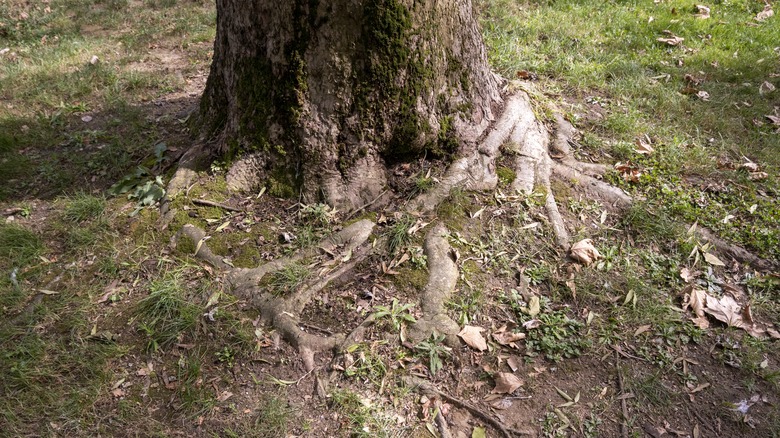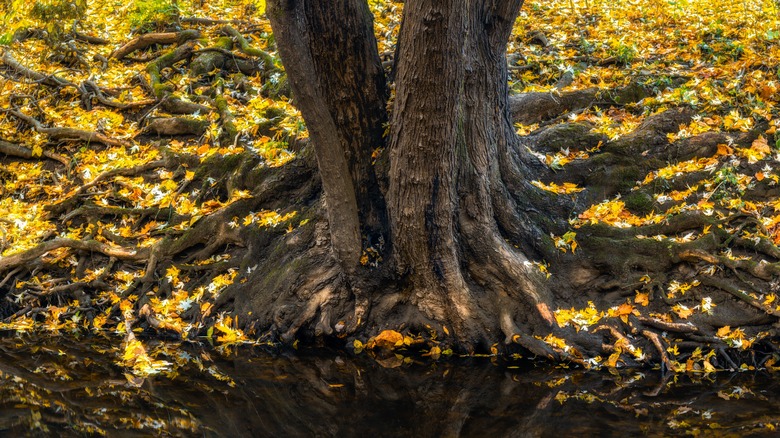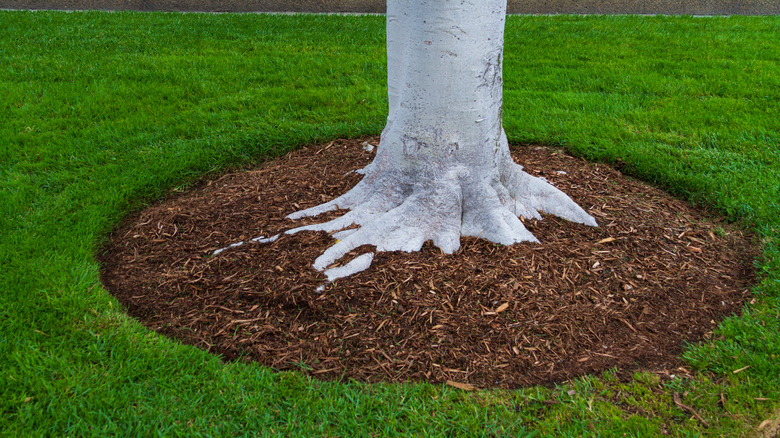Should You Cover A Tree's Exposed Roots With Soil?
Do you have a tree with exposed roots on your property? If so, you might be tempted to cover them with dirt. Maybe the tree seems unkempt with its gnarled roots poking out, creating bald patches of grass on your lawn and opportunities for weeds to grow. Or perhaps you're worried that the roots are creating a tripping hazard and you're anxious to get them back underground. Or maybe you just want to do something with the area the roots are occupying, whether that is creating an aesthetic flower bed or setting up a bench under the shade. Whatever your reasons, you might want to reconsider them because it's not a good idea to cover a tree's exposed roots. Doing so can cut them off from oxygen, which in turn can damage the tree.
Plus, simply dumping dirt over exposed roots puts a band-aid on the issue rather than solving it. If the roots are on the surface, that means there is a reason why they had to come above ground. Specifically, there is probably a problem with the soil or available space underneath, and burying them under a mound of dirt doesn't solve it. Here is why you shouldn't cover a tree's roots, and what to do instead.
Why you shouldn't cover a tree's exposed roots with soil
Exposed roots, or surface roots, shouldn't be covered with a heap of dirt because they will suffocate. They came up to the surface probably due to a lack of oxygen underground, so adding a thick layer of dirt will recreate the original problem for the roots. When they can't get enough oxygen, their cells will begin to die, which will lead to permanent damage to the rest of the tree. Because of this, covering the tree's above-ground roots with dirt is a rookie mistake.
Throwing dirt over them also doesn't address the underlying issue. Sure, mature trees grow large, thick roots, which is why sometimes they poke out from underground. But if you have a relatively young tree and you're noticing surface roots, you might have an issue with your dirt instead. For example, roots tend to grow upward towards the surface when the soil is overly compacted or saturated. That's because the roots lack oxygen in those conditions, so they start growing where they can access more air. This means you need to solve your soil issue if you don't want more roots poking through. There might also not be enough space underground where the tree is growing, which is why the roots came to the surface. That might mean there is a pipe or other large structure underneath that needs your attention. Once you solve those issues, you can then minimize the risk of more exposed roots developing.
What to do with exposed tree roots
If you don't want to leave the roots exposed, you can cover them with a thin layer of soil or mulch. Add no more than three inches to ensure the roots still get adequate air and you're not putting it in danger of root rot. If you're worried about damaging the roots, try utilizing mulch over dirt. Mulch is much lighter, allowing more air to filter through to the exposed roots. If you go the mulch route, also avoid creating a mulch volcano around the trunk, as that will also suffocate the tree. Another way to hide the roots is to add about two inches of soil mixed with grass seed, which will eventually develop into turf that will cover the roots. However, this is only a temporary fix, since the roots will only continue to grow and poke back out in a few years. At that point, you can repeat the process once again.
You can also begin to aerate the soil, lessening the ground's compaction and bringing more air down to the underground roots. This will help minimize the chance that more surface roots will develop. If you aren't confident in aerating the dirt with a pointy tool when there is a maze of roots zigzagging about, you can call a tree expert or arborist to do it for you.


